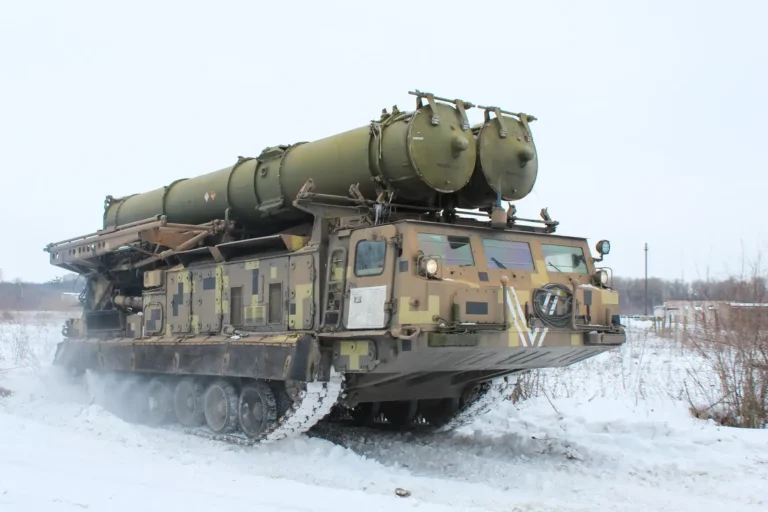Follow Us:

Share
Russia Modernizes 300mm Rocket Systems as its leading missile manufacturer, NPO Splav, embarks on a groundbreaking modernization program for the 300mm rockets deployed on the BM-30 Smerch and Tornado-S multiple launch rocket systems (MLRS).
This bold initiative aims to dramatically extend the range and precision of these powerful artillery systems, pushing their operational limits well beyond 300 kilometers and redefining their battlefield capabilities.
For decades, Russia’s rocket artillery has been a mix of Soviet-era designs and modernized systems. Platforms like the BM-21 Grad, BM-27 Uragan, and BM-30 Smerch have undergone substantial upgrades, especially with the introduction of advanced Tornado-G and Tornado-S variants.

These systems rely heavily on 300mm rockets, which are capable of striking targets up to 200 kilometers away, depending on the specific variant used.
These extended ranges have proven instrumental in counter-battery operations against Western-supplied systems like the HIMARS and M270 MLRS employed by Ukrainian forces.
With Russia’s invasion of Ukraine highlighting the strategic importance of long-range artillery, enhancing the capabilities of the BM-30 Smerch and Tornado-S has become a top priority.
Before the Ukraine conflict escalated, estimates suggested Russia maintained a stockpile of 100 to 170 BM-30 Smerch units and about 20 Tornado-S systems in active service. While these numbers have likely increased as production ramped up, precise figures remain unknown.
Despite combat losses—Oryx, an independent intelligence group, reports at least two BM-30 Smerch systems destroyed—these systems remain crucial assets in Russia’s artillery arsenal. Their ability to outrange many Ukrainian systems often provides a decisive battlefield edge, enabling strikes deep into enemy territory.
In December 2024, NPO Splav unveiled its ambitious plans to revolutionize its 300mm rocket systems. Central to this initiative is the development of a new guided hypersonic missile featuring a ramjet engine.
This cutting-edge technology promises to transform the BM-30 Smerch and Tornado-S into platforms capable of delivering highly precise, long-range strikes. Existing rocket variants such as the 9M55F/K and 9M544/549 are undergoing a significant overhaul.
Russian 9M544 300mm guided rocket for Tornado-S MLRS pic.twitter.com/F6Ne0Enp0k
— Caesar (@Ninja998998) October 22, 2020
The upgrades include improved aerodynamics and enhanced solid-fuel propulsion systems, which aim to extend their range to an impressive 200 kilometers.
Additionally, NPO Splav is developing a new 300mm guided missile with a projected range of 300 to 330 kilometers. Featuring an integrated rocket engine and retractable air intakes, this missile is expected to maintain speeds of around 1,000 meters per second during the terminal phase of flight.
Although its warhead will be smaller than that of the Iskander-M system, the missile’s extended range and precision represent a significant leap forward for Russia’s artillery capabilities.
Despite these promising advancements, the timeline for deploying these next-generation systems remains uncertain. The technical challenges associated with designing and manufacturing such sophisticated weaponry mean that widespread deployment may still be several years away.
Nevertheless, the potential battlefield impact of these innovations is immense, particularly in countering Western-supplied artillery systems and extending Russia’s strategic reach.
The Tornado-G and Tornado-S systems represent critical components of Russia’s modernized artillery forces. Introduced in the late 2000s, the Tornado-G is an upgraded version of the BM-21 Grad.
It is equipped with advanced navigation and targeting systems, allowing for faster deployment, more precise strikes, and compatibility with a wide range of munitions. However, its 122mm rockets have a maximum range of around 40 kilometers, making it best suited for localized tactical operations.

In contrast, the Tornado-S is a more advanced successor to the BM-30 Smerch, utilizing 300mm rockets to deliver heavy payloads at extended ranges of up to 200 kilometers. Its advanced guidance systems ensure exceptional accuracy, enabling it to engage high-value strategic targets such as command centers and air defense systems.
Unlike the Tornado-G, the Tornado-S is often deployed as part of larger, integrated artillery units, leveraging networked command-and-control systems for coordinated strikes.

While the Tornado-G excels in tactical scenarios where shorter-range precision is required, the Tornado-S is designed for strategic operations, targeting critical assets deep behind enemy lines.
The differences in range, payload, and technological sophistication make these systems complementary rather than interchangeable, with each fulfilling distinct operational roles. Together, they provide a versatile and powerful arsenal for Russia’s artillery forces.
Share
Defense Feeds is publication focusing on informing, engaging, and empowering the world by providing accurate information from defense technology.
Powered by Defense Feeds © 2025 – All rights reserved.